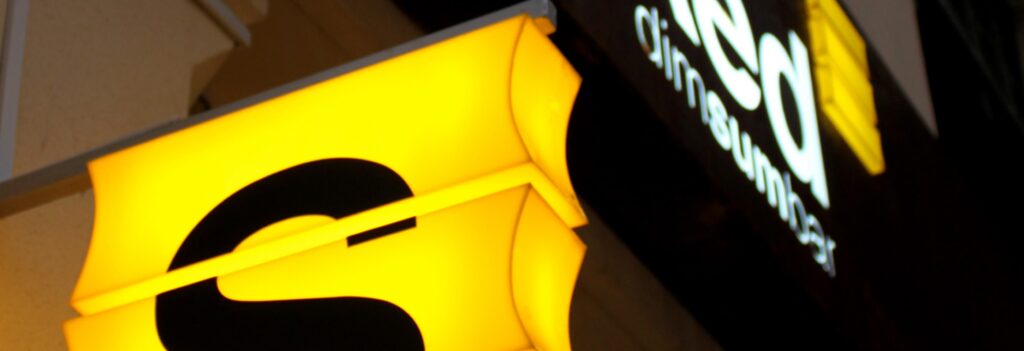
Stacked Dim Sum Bar
At Alchemist Studios, nestled in the picturesque yet creatively dynamic heart of Henley-on-Thames, and serving a sophisticated London clientele, we understand that a restaurant logo is far more than a decorative garnish. It is the very essence of a culinary experience – a potent visual key that ignites appetite, signifies flavour, communicates atmosphere, and builds an immediate, visceral connection with potential diners. In the fiercely competitive gastronomic world, where every meal is a performance and every impression counts, the design of an enduring restaurant logo is not merely an artistic flourish; it is a critical strategic imperative that shapes perception, attracts ideal patrons, and inspires unforgettable culinary journeys. The best way to create a strong restaurant brand identity is through thoughtful logo design that captures your unique story and appeals to your target audience.
Much like the strategic clarity championed by design legends like Paul Rand, who distilled complex ideas into elegant simplicity, or the meticulous brand systems developed by firms such as Pentagram, a truly effective restaurant logo doesn’t just display a name. Designers often draw inspiration from culinary experiences, industry trends, and brand stories to create unique restaurant logos that stand out in the market. The role of professional designers is to distill a restaurant’s essence into a compelling logo that resonates with diners. It whispers of fresh ingredients, unique cooking methods, comforting nostalgia, or adventurous new flavours. It’s the silent maître d’ of a brand’s narrative, speaking volumes about gourmet dining, casual comfort, ethical sourcing, international authenticity, or innovative fusion, all within a single, compelling mark.
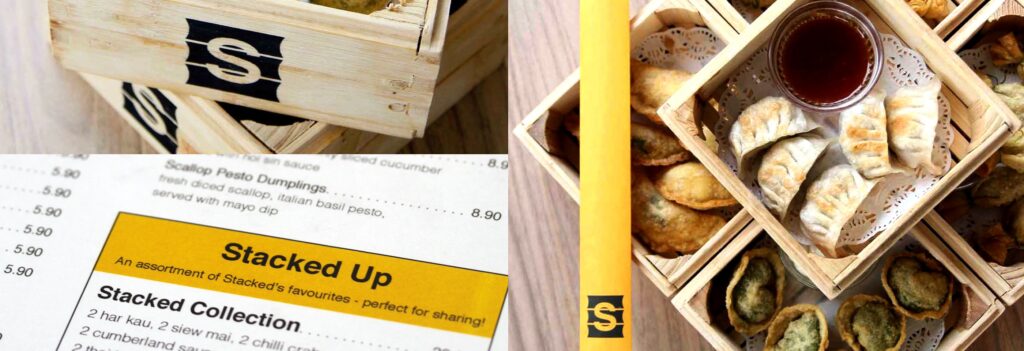
Beyond the Menu:
The immediate inclination in restaurant logo design often leans on literal depictions: forks, knives, chef hats, or generic food illustrations. While these are certainly evocative, an uncritical application can lead to visual cliché and a failure to differentiate in a highly saturated and emotionally driven market. As leading design agencies like Landor & Fitch or Chermayeff & Geismar & Haviv consistently articulate, the genesis of an impactful restaurant logo is rooted in profound strategic inquiry – a deep dive into the establishment’s unique culinary philosophy, its target diner’s palate, and its desired position within the gastronomic landscape.
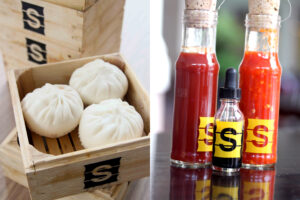
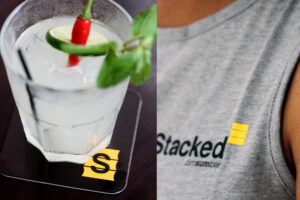
- What is the core culinary identity and dining concept of your restaurant? Are you a Michelin-starred fine dining establishment, a bustling casual eatery, an authentic international cuisine spot, a vibrant street food vendor, a cozy neighbourhood bistro, or a health-focused café? Each demands a distinct visual language. Explore a collection of logo examples or templates for inspiration to see how different concepts are visually represented. Selecting the right icon, such as a fork, bowl, or chef hat, is crucial to visually communicate your restaurant’s concept.
- Who is your target diner and what are their motivations for choosing your restaurant? Are they seeking an exclusive gastronomic adventure, a comfortable family meal, a quick and convenient bite, a trendy social experience, or an ethically sourced, sustainable option? Their demographic, lifestyle, and values must be deeply understood.
- What emotional connection does your brand seek to forge? Does it aim to evoke elegance, comfort, excitement, nostalgia, warmth, sophistication, or perhaps a sense of community? The logo must embody this desired emotional resonance. Including a memorable tagline can further reinforce your brand message and emotional appeal.
- What is your unique selling proposition (USP) in a crowded marketplace? Is it your unique signature dish, your chef’s celebrity, your ambiance, your price point, your sustainable practices, your innovative fusion, or your exceptional service? The logo is the shorthand for this distinction.
- Where will the logo primarily exist? From exterior signage and interior décor (menus, napkins, uniforms) to digital platforms (website, social media, booking apps, delivery platforms, online reviews), and potentially even branded merchandise (coffee cups, gift vouchers). Its versatility across diverse materials, sizes, and digital environments is paramount.
- How do you approach the discovery phase? The team can use related keywords to refine the search for logo inspiration and find options that align with your brand’s vision.
This rigorous strategic immersion ensures that the resulting logo is not merely a decorative element. It becomes a powerful, adaptive asset designed to communicate instantly, differentiate powerfully, and build lasting sensory and emotional connections that drive reservations, cultivate repeat visits, and create memorable dining experiences.
For best results, consider these tips: choose a template that matches your restaurant’s style, customize it with the right icons, colors, and tagline, and involve your team to ensure the final design truly reflects your brand.
The Alchemist's Craft: Principles for Designing Restaurant Logos
Our approach at Alchemist Studios integrates classic design wisdom with a keen understanding of culinary trends, consumer psychology, and the powerful sensory experience of food, ensuring that logos we craft for restaurants are both timeless and irresistibly appealing.
- Appetite Appeal & Sensory Invitation: The Taste in the Sight:
The most effective restaurant logos instinctively make the viewer hungry or curious. They hint at taste, texture, and aroma through judicious use of colour, form, and implied movement. Incorporating industry-specific icons, such as a bar, chef’s hat, or cutlery, in restaurant logo designs can immediately communicate the establishment’s focus and attract the right audience.
- Clarity & Readability: The Promise on the Façade and Screen:
- Example: Nando’s: This popular chain’s logo, while featuring a stylised chicken, is primarily known for its vibrant red and warm colour palette, coupled with a lively, almost hand-drawn font. It communicates energy, a bold flavour profile (Peri-Peri), and a casual, fun dining experience. The warmth of the colours directly stimulates appetite and excitement.

- Example: Dishoom (London): Known for its Bombay café experience, Dishoom’s logo often features a distinct, almost vintage-inspired typography that evokes a sense of nostalgia and authentic Indian heritage. The visual identity extends to intricate patterns and a warm, inviting colour palette, all contributing to the restaurant’s unique, immersive sensory appeal before a single dish is tasted.
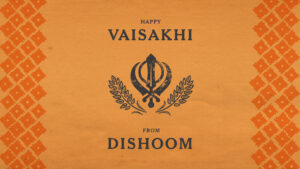
In a bustling street or a crowded online search, a restaurant logo needs to be instantly legible and understandable. The name and core message should be clear at a glance, without visual clutter. Adding taglines—short, memorable phrases—can further reinforce brand identity and help communicate your restaurant’s unique promise.
- Example: Five Guys: Their logo is remarkably simple – bold, red, blocky typography. It’s direct, no-nonsense, and communicates a focus on straightforward, quality burgers and fries without fuss. Its extreme clarity ensures it’s instantly recognisable on their signature red and white interior, on signage, and across all digital platforms, reinforcing their no-frills, high-quality proposition.
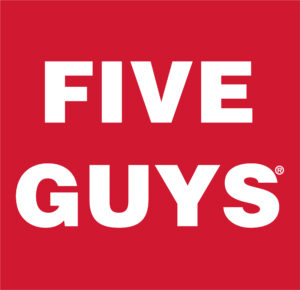
- Example: Pret A Manger: The handwritten-style, friendly typeface of “Pret A Manger” communicates naturalness, freshness, and approachability. It feels personal and authentic, aligning with their emphasis on freshly made, wholesome food. Its legibility across high-street signage and packaging is crucial for a fast-casual brand.
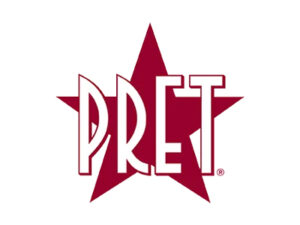
- Personality & Storytelling: From Concept to Cuisine:
A great restaurant logo imbues the establishment with a distinct personality, hinting at its origin story, its culinary philosophy, or the unique dining experience it offers. This often involves evocative imagery, handcrafted aesthetics, or sophisticated typography.
- Example: The Fat Duck (Bray, UK): Heston Blumenthal’s iconic restaurant uses a minimalist yet intriguing logotype, often with subtle, almost scientific, typography. This reflects its avant-garde, experimental approach to gastronomy, where science meets culinary art. The logo’s understated elegance hints at a sophisticated and thought-provoking dining experience rather than overt literalism.
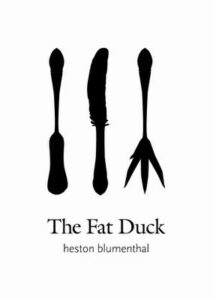
- Example: Pizza Pilgrims (London): This popular Neapolitan pizza chain uses a fun, playful, almost cartoonish logo featuring stylised pizza elements and quirky typography. It perfectly captures their informal, authentic, and joyful approach to pizza, appealing to a younger, casual dining audience seeking a relaxed and delicious experience. The logo is an extension of their cheeky brand personality.
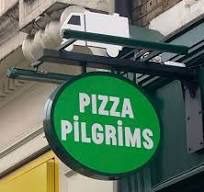
- Versatility & Ambiance: From Tableware to Takeaway:
A restaurant logo must perform flawlessly across an unprecedented array of touchpoints – from a finely embossed detail on a menu cover to a large glowing sign, from a high-resolution image on a booking app to a stamp on a takeaway bag. This demands vector-based designs that can scale infinitely without loss of quality, and adapt seamlessly to different materials and contexts. Logos can also be applied to merch such as uniforms, branded products, and promotional items, ensuring consistent brand presence everywhere.
- Consider a fine dining restaurant’s entire brand ecosystem: The logo needs to look impeccable when embroidered on a chef’s jacket, etched onto a wine glass, printed on a bespoke napkin, and animated for a website intro. The ability for the logo to maintain its integrity and prestige across diverse materials and applications is key. For digital use, having a transparent version (such as a PNG) is essential for seamless integration on websites and social media.
- Ethos & Values: Communicating What Matters:
In an era of conscious consumption, many restaurants leverage their logos to communicate ethical sourcing, sustainability, farm-to-table practices, or community engagement. This requires thoughtful design that authentically conveys these values.
- Example: River Cottage (UK): Hugh Fearnley-Whittingstall’s River Cottage brand (encompassing restaurants, cookery school, products) typically uses rustic, naturalistic typography and sometimes features simple, organic illustrations (like a pig or a vegetable). This design strongly communicates their ethos of local sourcing, sustainable living, and a return to wholesome, seasonal food. The logo feels authentic, down-to-earth, and trustworthy.
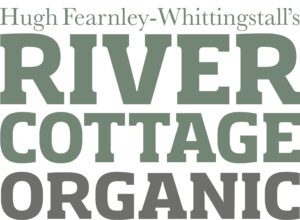
When creating your restaurant logo, you can pick from a wide range of logo designs, customize fonts, colors, icons, and layout, and generate a professional logo in just minutes using online tools. Many platforms offer free logo designs, and once you’ve found the perfect one, downloading different versions for various uses is quick and easy. Downloading your logo files gives you instant access to high-resolution, transparent, and multiple formatted versions, ready for use on everything from your website to merch and marketing materials.
The Designer’s Pantry: Choosing the Right Tools for Logo Creation
Creating a professional restaurant logo starts with having the right tools at your fingertips. Today’s restaurant logo makers offer a treasure trove of resources—think thousands of templates, a rich palette of design elements, and intuitive customization options that make the creative process accessible to everyone. Whether you’re a seasoned designer or a restaurateur venturing into branding for the first time, a quality logo maker provides instant access to a vast library of icons, fonts, and colors, allowing you to experiment and refine your vision until you achieve the perfect logo for your restaurant.
These platforms are designed to help you stand out from competitors by making it easier to create a logo that truly reflects your brand identity. With drag-and-drop simplicity, you can mix and match templates, add or edit icons, and fine-tune fonts and colors to match your restaurant’s personality. The best logo makers also offer professional-grade features, enabling you to create a standout logo that looks as if it was crafted by a top designer—without the steep learning curve or cost. Ultimately, the right tools empower you to bring your restaurant’s story to life, ensuring your new logo is as unique and memorable as your menu.
The Secret Sauce: The Importance of Logo Files
A professional restaurant logo isn’t just about how it looks—it’s also about how it works across every touchpoint. That’s where logo files come in. When you create your logo with a restaurant logo maker, you should receive a suite of logo files in various formats, each tailored for specific uses. SVG files, for example, are ideal for print materials and signage because they scale to any size without losing quality. PNG files, on the other hand, are perfect for digital platforms like your website or social media, offering crisp, transparent backgrounds for seamless integration.
Having access to the right logo files ensures your brand always looks its best, whether it’s on a business card, a menu, or a billboard. A good restaurant logo maker will provide you with all the essential formats—SVG, PNG, JPEG, and more—making it easy to use your logo wherever you need it. This versatility is crucial for maintaining a professional appearance and ensuring your restaurant logo is always ready to shine, no matter the context.
Avoiding the Bitter Aftertaste: Common Mistakes in Restaurant Logo Design
Designing a restaurant logo can be a creative adventure, but it’s easy to fall into a few common traps. One frequent mistake is overloading the logo with too many design elements—think multiple icons, busy backgrounds, or an excess of colors—which can make the logo look cluttered and dilute your brand’s message. Another pitfall is neglecting scalability; a logo that looks great on a small business card might lose its impact or become unreadable when blown up for signage or digital banners.
To avoid these issues, focus on creating a simple, clean design that communicates your restaurant’s essence at a glance. Test your logo at different sizes to ensure it remains clear and effective, whether it’s on a tiny loyalty card or a large storefront sign. Many restaurant logo makers offer built-in tools to preview your design in various contexts, making it easy to spot and fix potential problems before they become costly mistakes. By keeping your design streamlined and functional, you’ll create a logo that’s both visually appealing and practical for every aspect of your business.
Serving with Style: Best Practices for Logo Usage
Once you’ve crafted your restaurant logo, the next step is to use it consistently and thoughtfully across all your brand touchpoints. From your website and social media profiles to print materials like menus, flyers, and packaging, a cohesive approach helps reinforce your brand identity and build recognition with your audience. Consistency in color, layout, and logo placement is key to achieving a polished, professional look that customers will remember.
It’s also important to consider how your logo will appear in different settings. For example, a logo that pops on a white background may need a different color scheme or layout to stand out on darker surfaces or merchandise. The best restaurant logo makers provide a variety of logo variations—different colorways, layouts, and file types—so you can easily adapt your logo for any use. By following these best practices, you’ll ensure your restaurant logo always looks its best and supports your brand’s growth across every platform.
The Taste Test: Measuring the Success of Your Restaurant Logo
A great restaurant logo should do more than just look good—it should resonate with your customers and drive real results for your business. To measure your logo’s success, start by gathering feedback from your audience through surveys, focus groups, or informal conversations. Pay attention to how your logo performs on social media: are people liking, sharing, or commenting on your posts? Website analytics can also provide valuable insights, showing whether your new logo is helping to increase click-through rates or conversions.
Many restaurant logo makers offer tools and resources to help you track these metrics and gather feedback, making it easier to refine your logo and brand identity over time. By staying attuned to your customers’ reactions and monitoring your logo’s impact, you can ensure your restaurant logo continues to support your business goals and leaves a lasting impression on everyone who walks through your door—or visits your website.
A Glimpse Beyond the Plate: The Future of Restaurant Logo Design
The world of restaurant logo design is evolving rapidly, driven by advances in technology and changing consumer expectations. Today’s logos are no longer static—they can be interactive, animated, or even responsive to user input, creating a dynamic brand experience both online and in-person. Sustainable and eco-friendly design elements are also gaining traction, with restaurants opting for logos and branding that reflect their commitment to the environment, such as using recycled materials or minimalist, low-waste designs.
Modern restaurant logo makers are keeping pace with these trends, offering cutting-edge features like AI-powered design suggestions, virtual reality previews, and customizable templates that incorporate the latest styles and technologies. By embracing these innovations, you can create a restaurant logo that not only captures your brand’s essence but also positions your business at the forefront of the industry. Staying ahead of the curve ensures your logo remains relevant, engaging, and memorable—no matter how the world of dining and design continues to evolve.
Alchemist Studios: Forging Your Restaurant's Distinction
At Alchemist Studios in London, we understand that designing a restaurant logo is about capturing the very essence of a culinary dream – translating the passion of the kitchen, the warmth of the hospitality, and the uniqueness of the flavours into a compelling visual language. We are not just designing symbols; we are crafting invitations to dine, promises of quality, and emblems of unforgettable experiences.
Our strategic process meticulously blends culinary insight with design excellence, ensuring your restaurant logo is:
- Strategically Grounded: Reflecting your unique culinary concept, target diner, and market position.
- Visually Appetising: Aesthetically inviting, memorable, and reflective of desired taste, atmosphere, and emotion.
- Experience-Driven: Designed for seamless integration across all physical touchpoints (menus, decor, uniforms) to enhance the dining ambiance.
- Digitally Agile: Performing flawlessly across all online platforms (booking, delivery, social media, reviews).
- Timeless & Authentic: Possessing an intrinsic quality that transcends fleeting food trends, building enduring reputation and customer loyalty.
Whether you’re an ambitious new chef ready to launch your culinary vision, an established restaurant seeking to refresh your beloved identity, or a multi-location group aiming for cohesive brand recognition, we invite you to explore how a strategically designed logo can become the most powerful emblem of your dining establishment.
Let Alchemist Studios apply our alchemical touch to your restaurant brand, forging a logo that truly stands as the recipe for your success, tantalising diners, and creating a lasting, delicious impression.
Contact Alchemist Studios today to discuss how we can engineer your unforgettable restaurant brand identity.